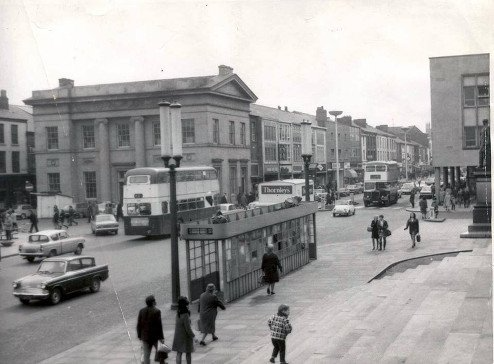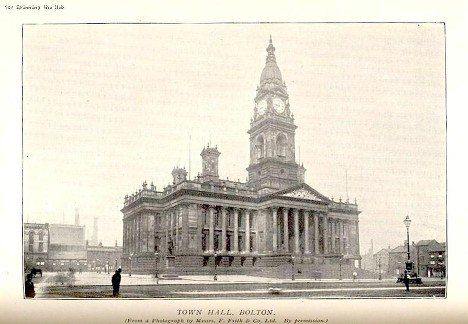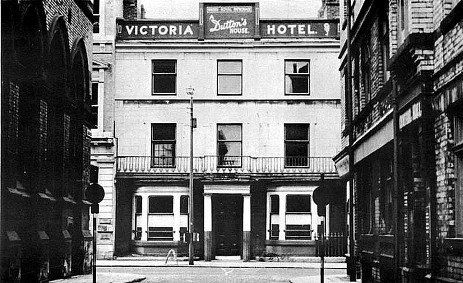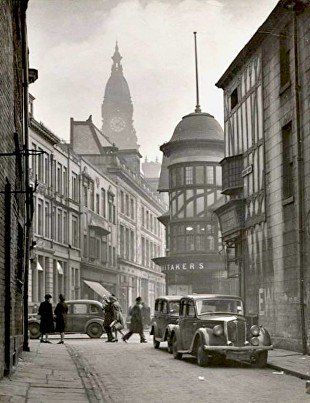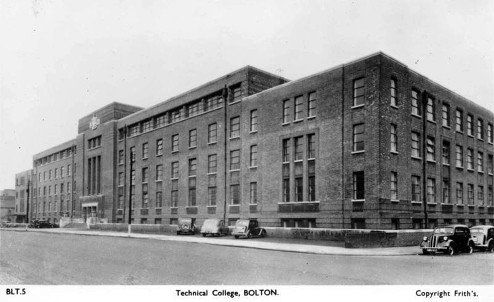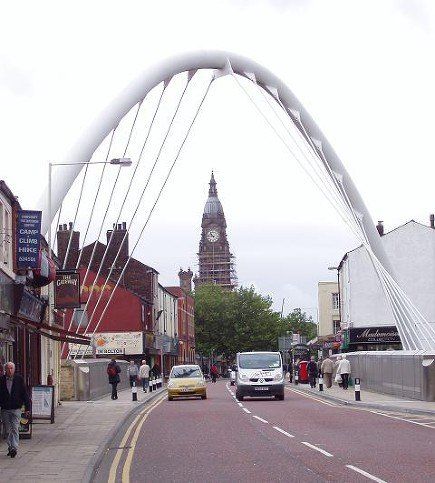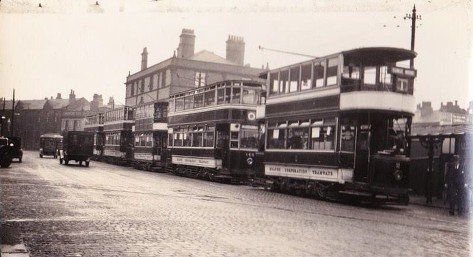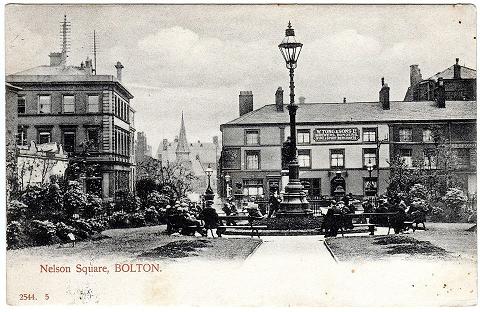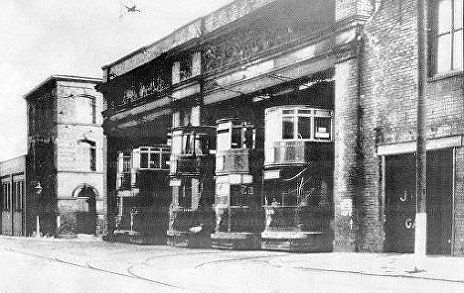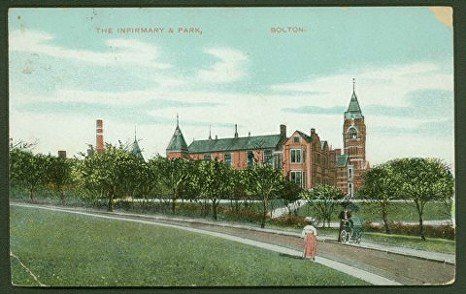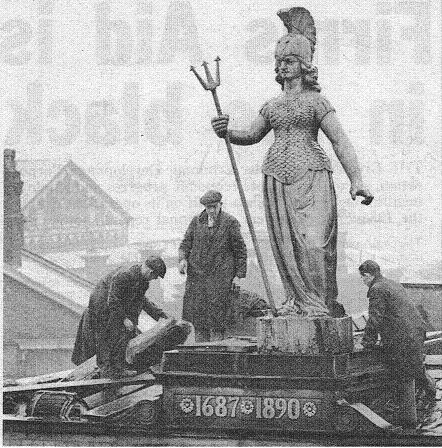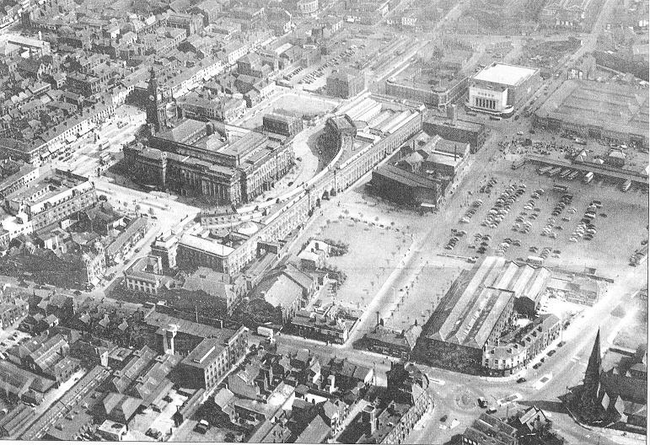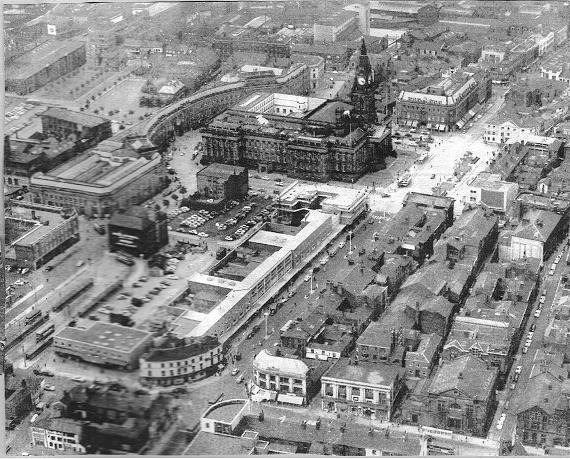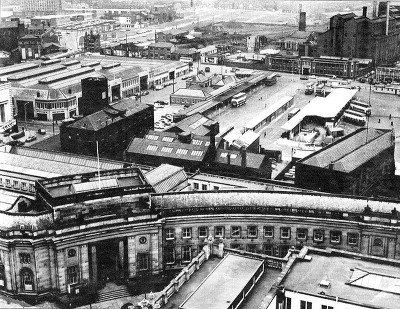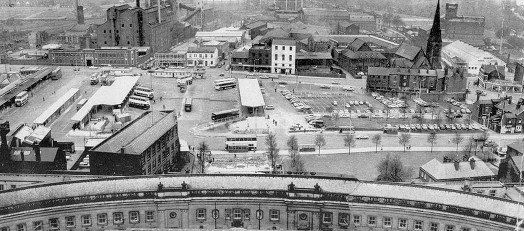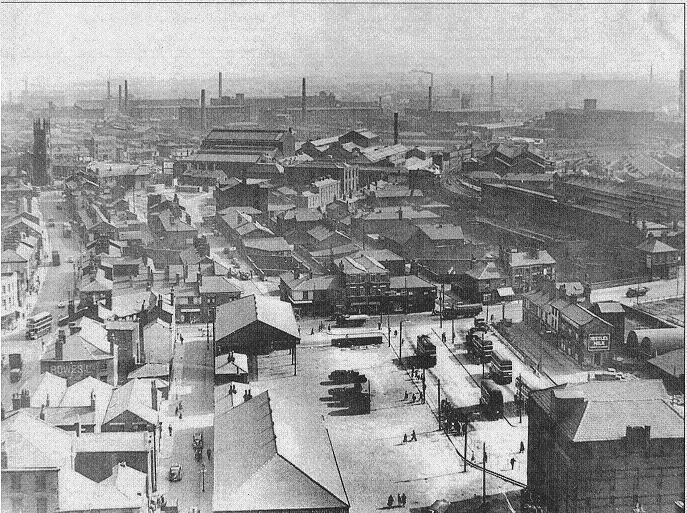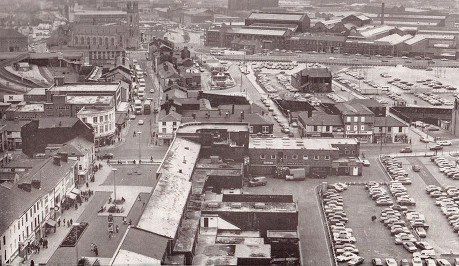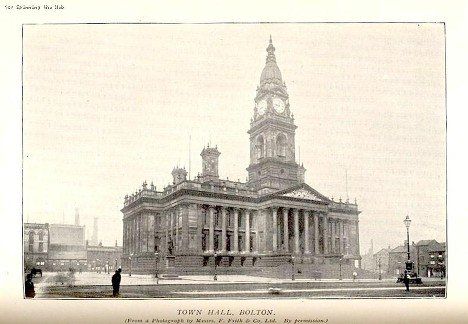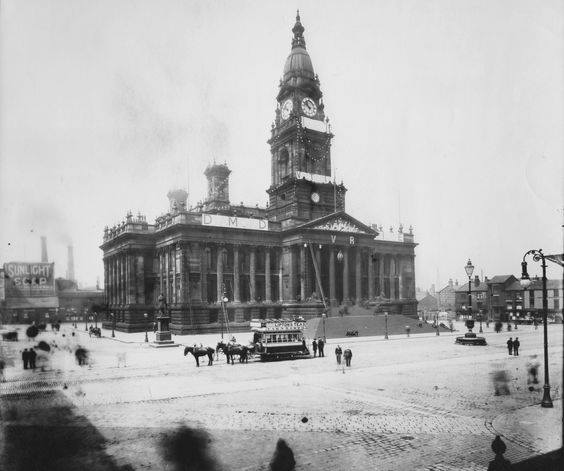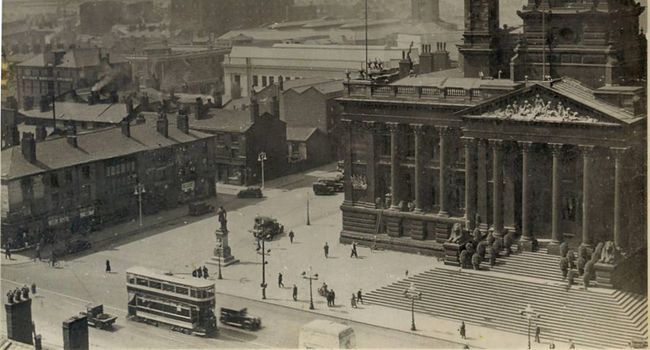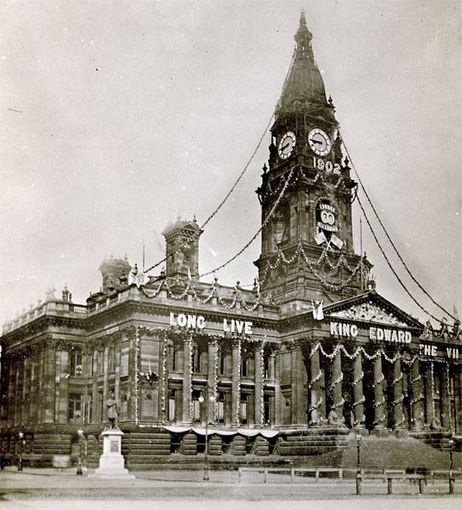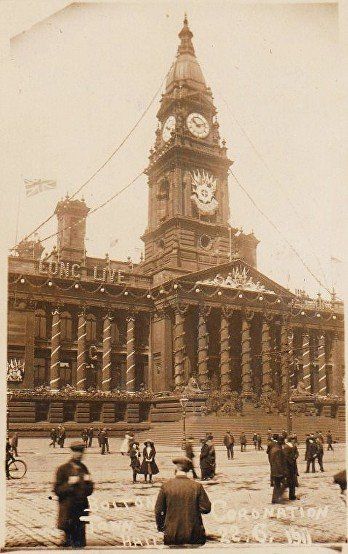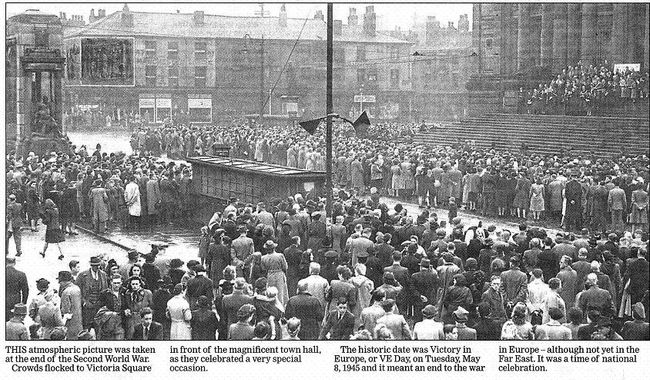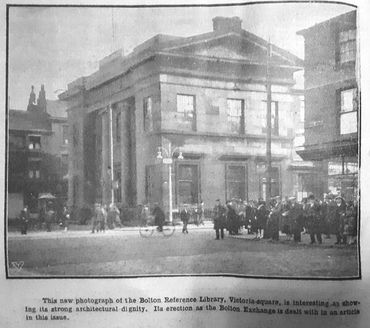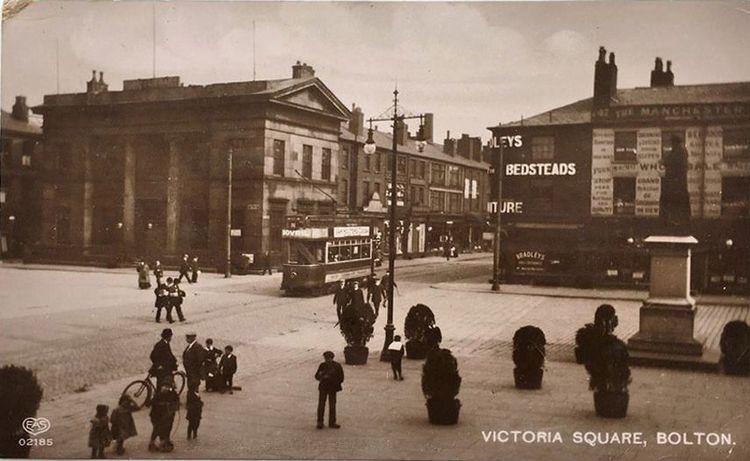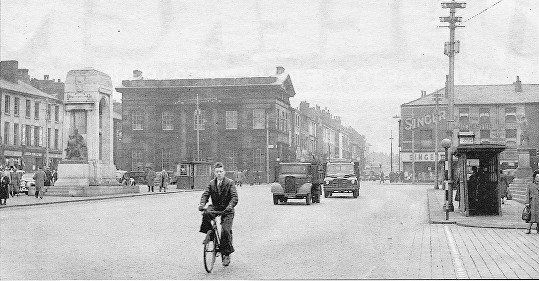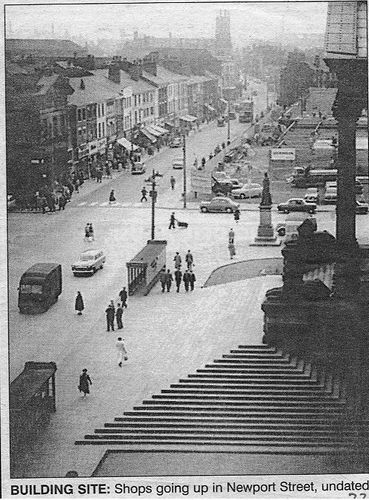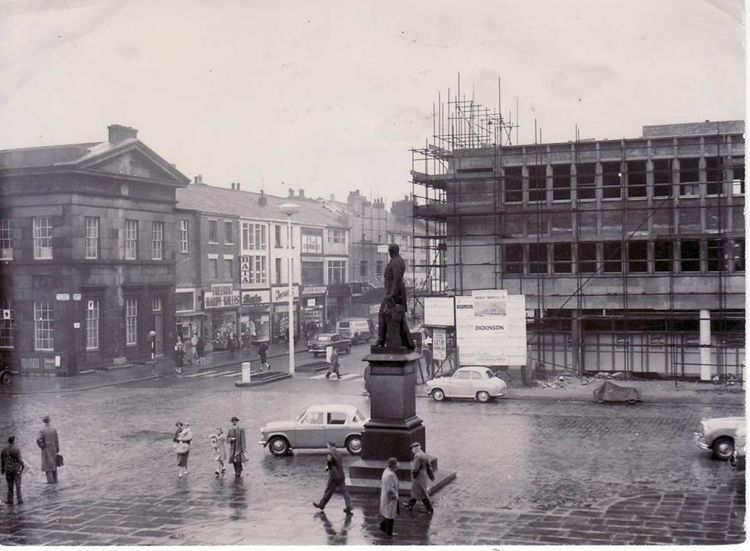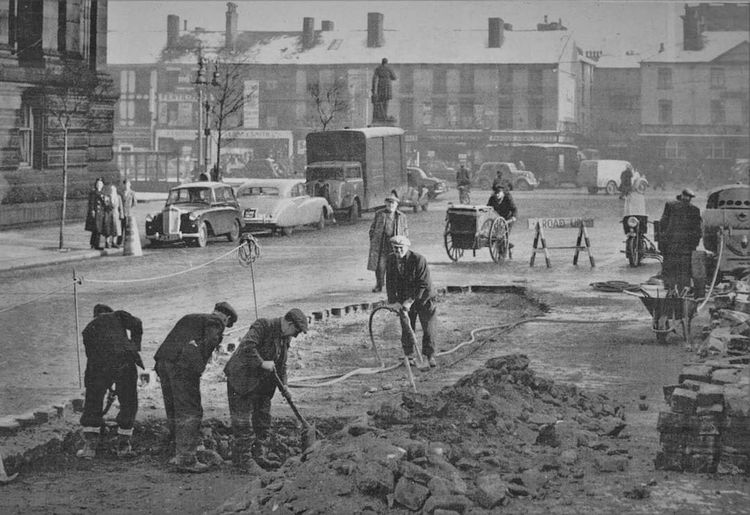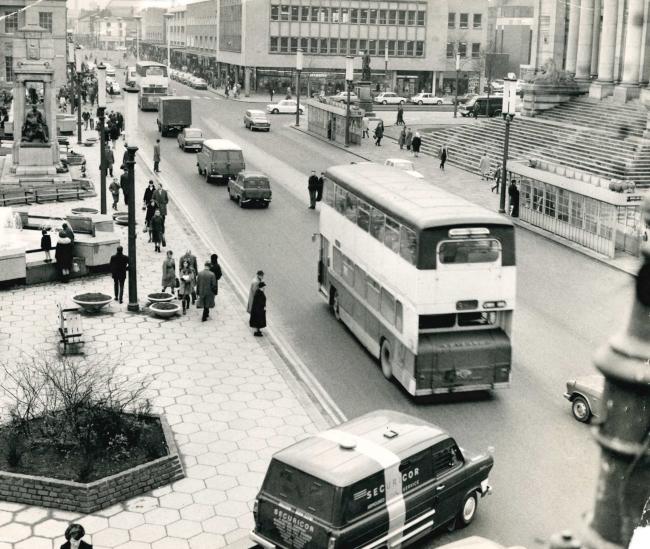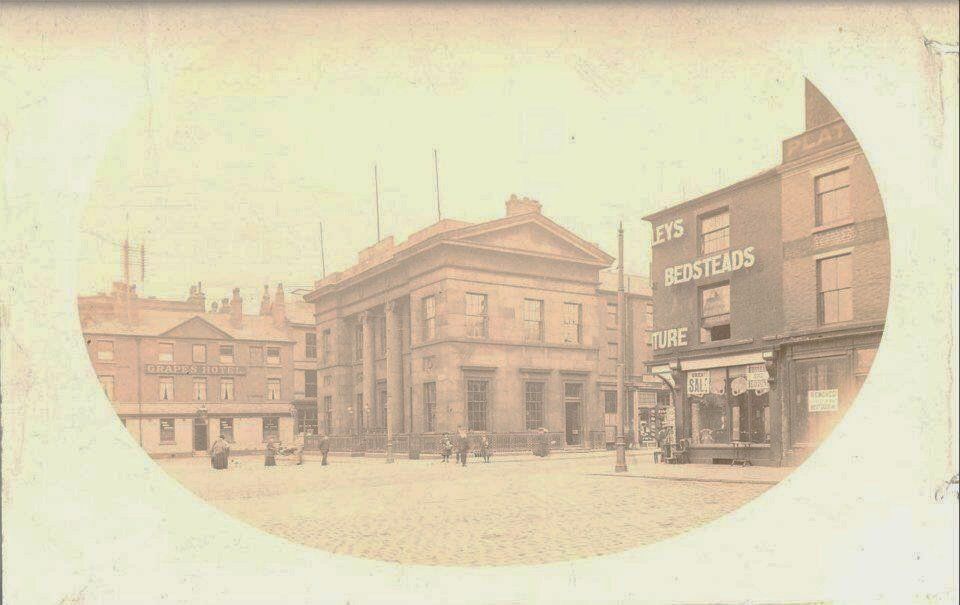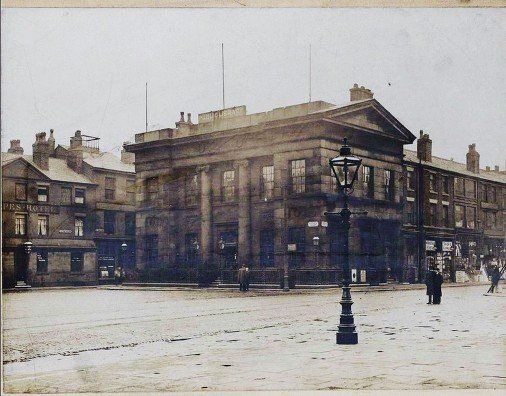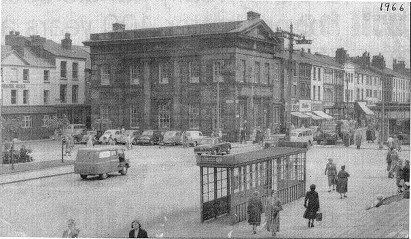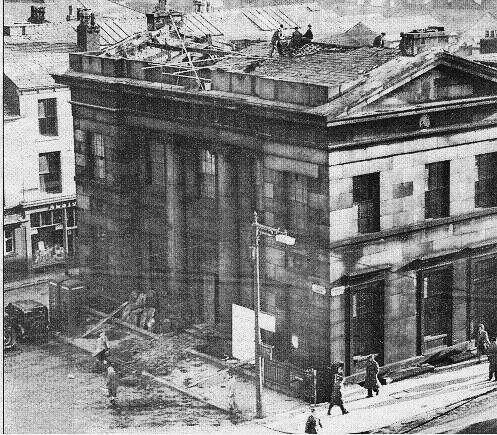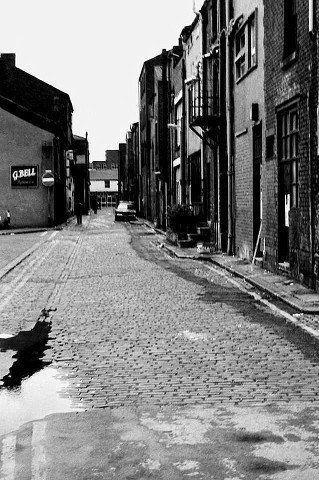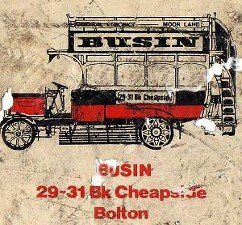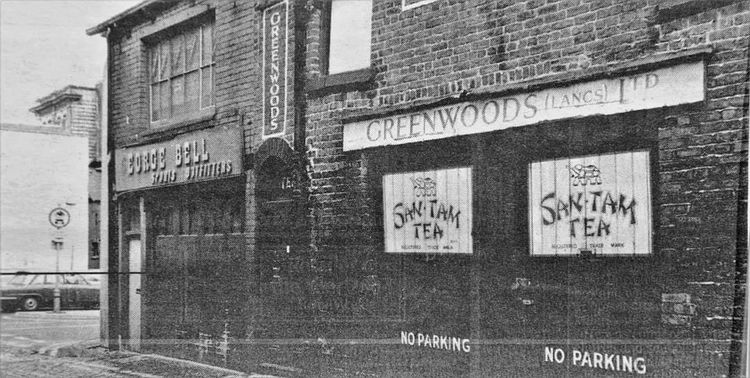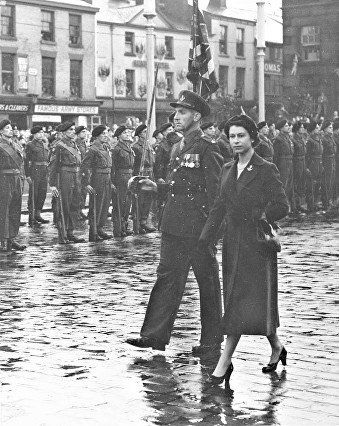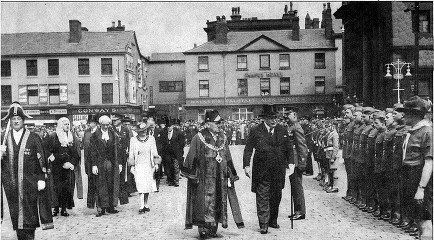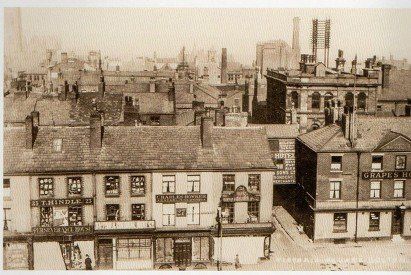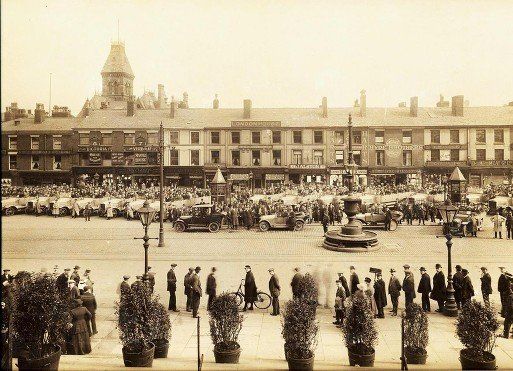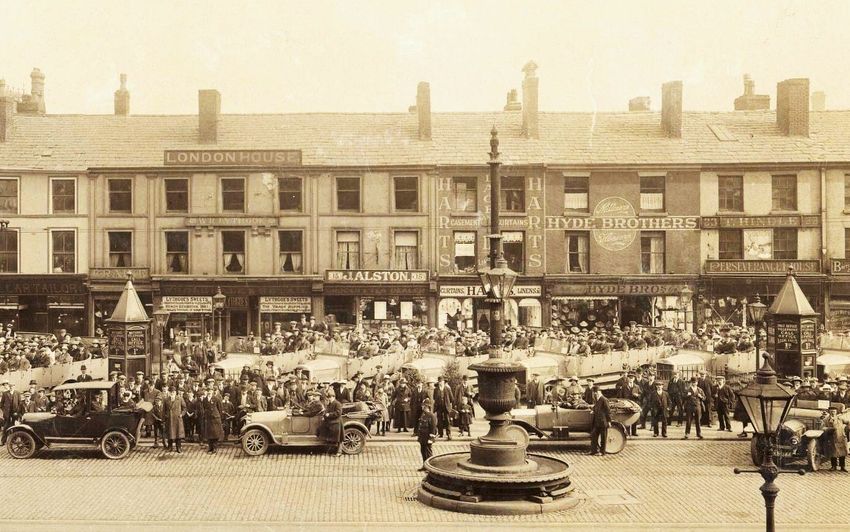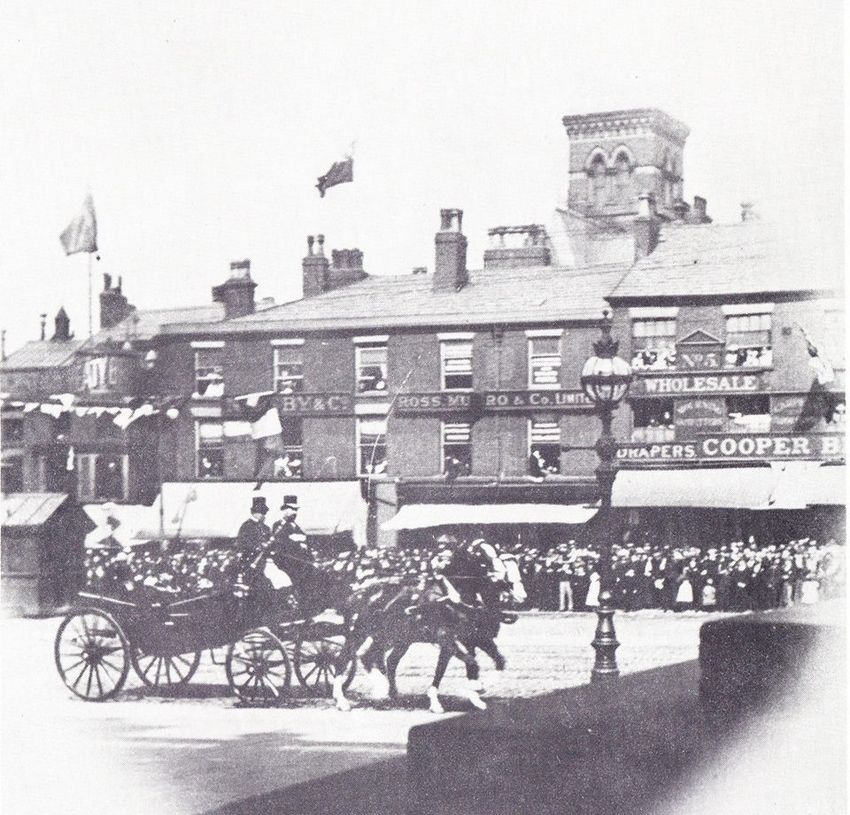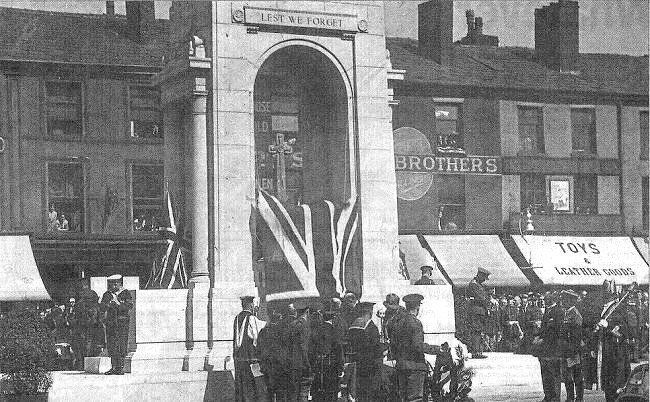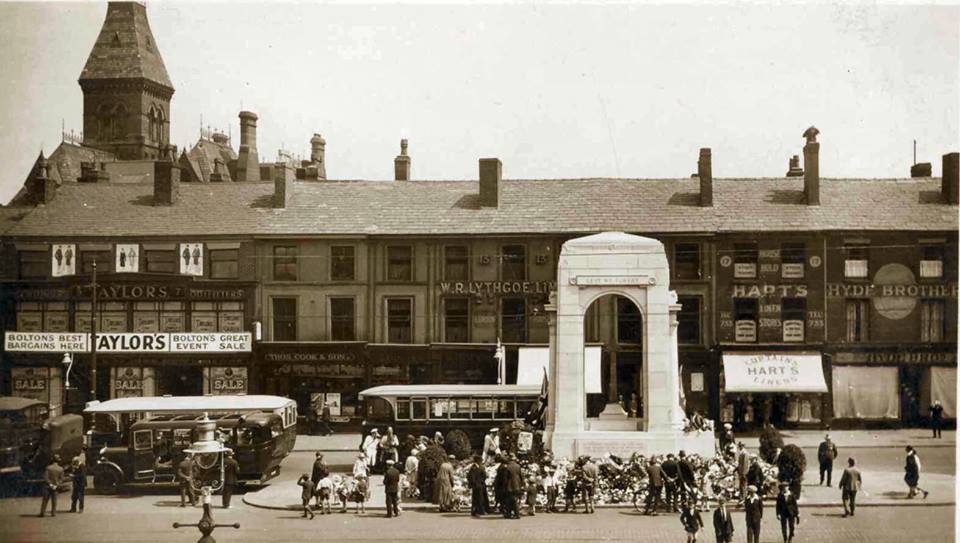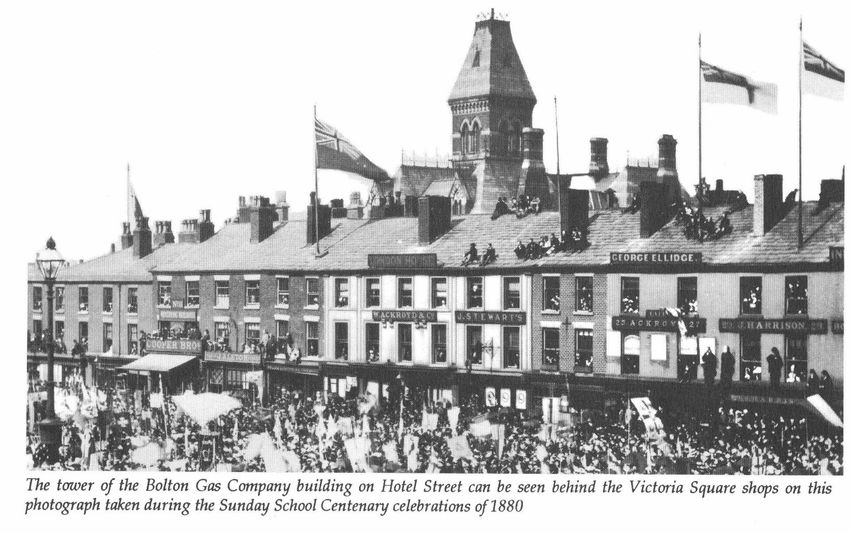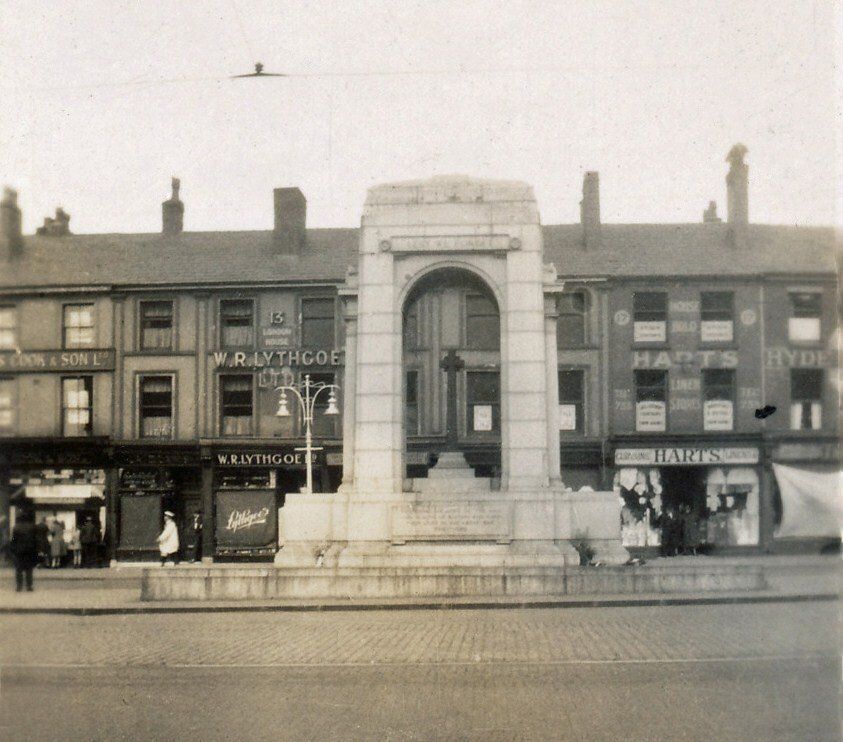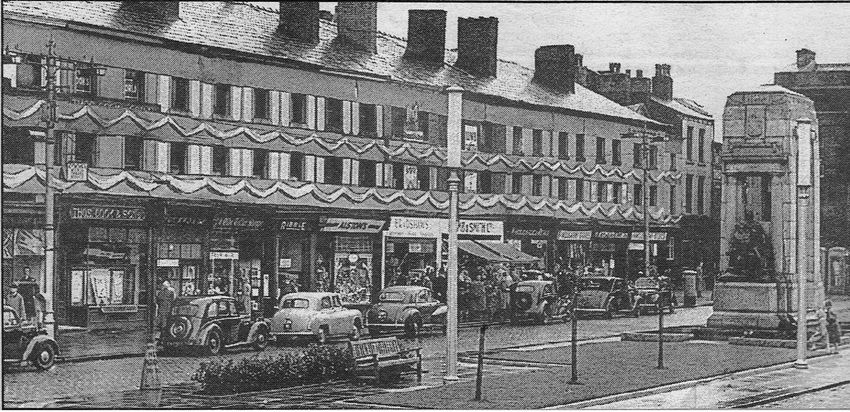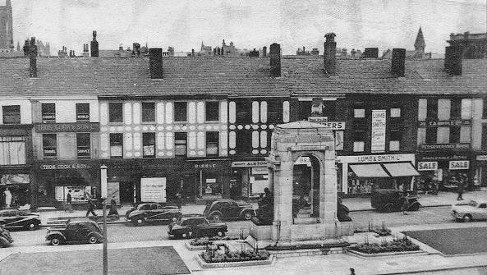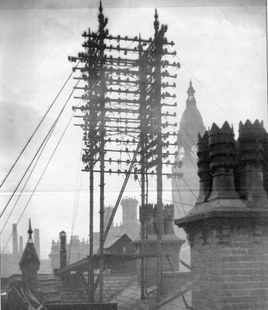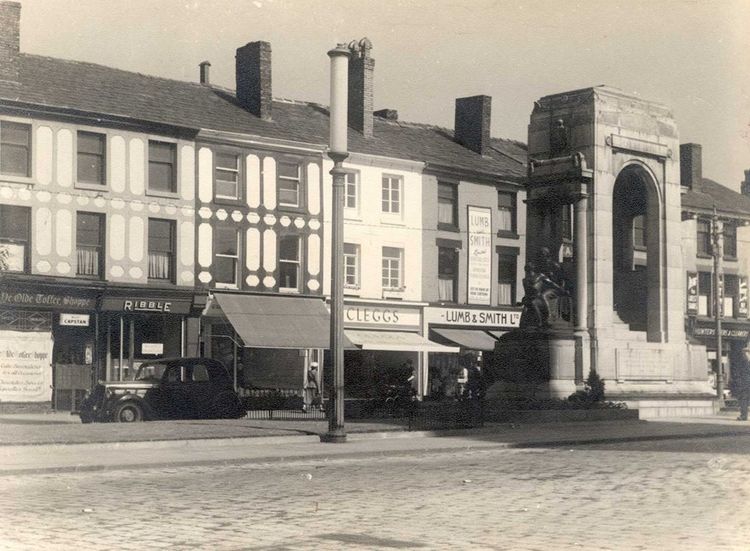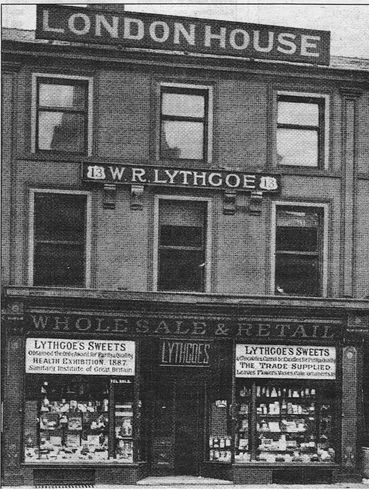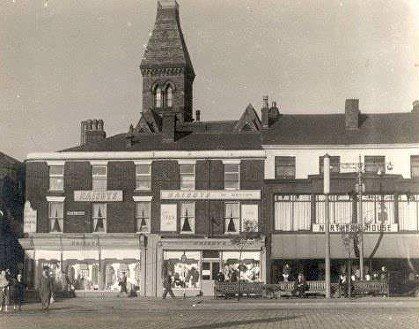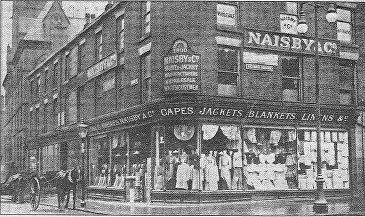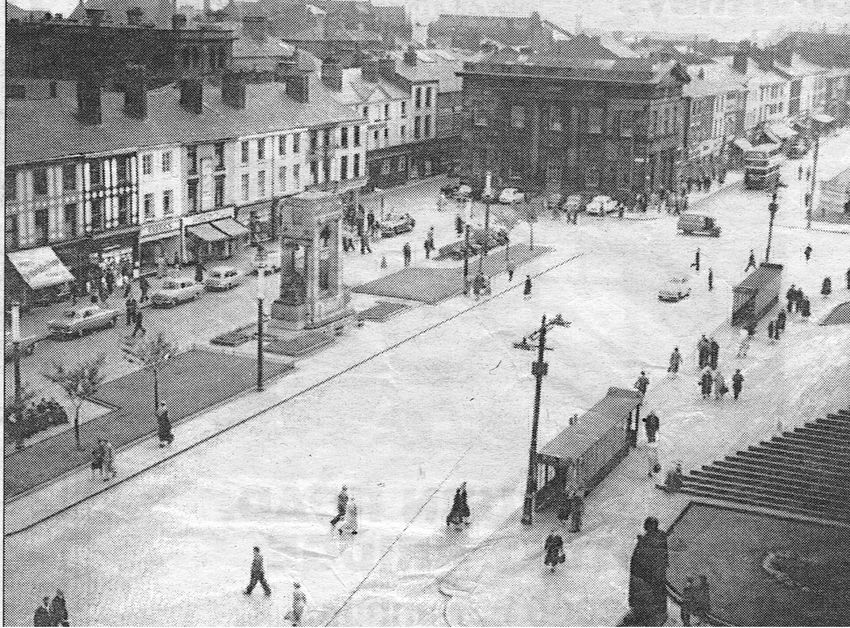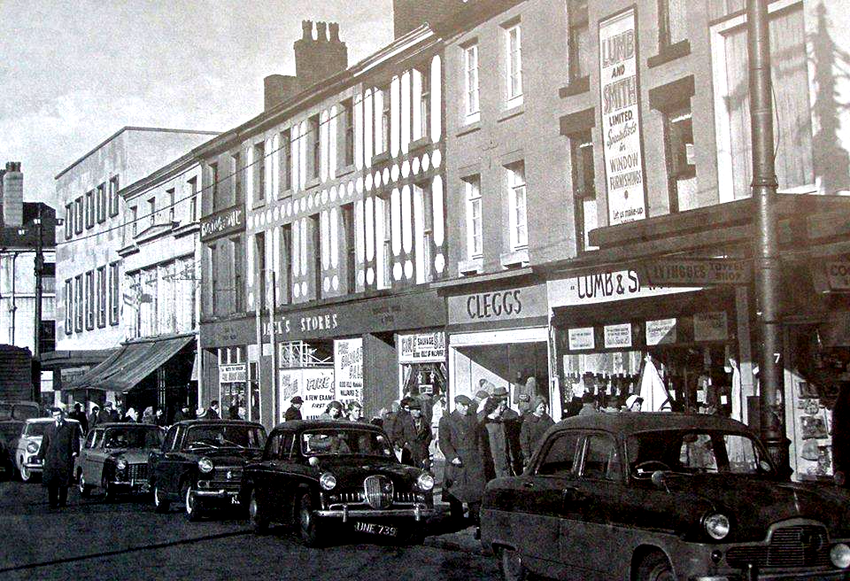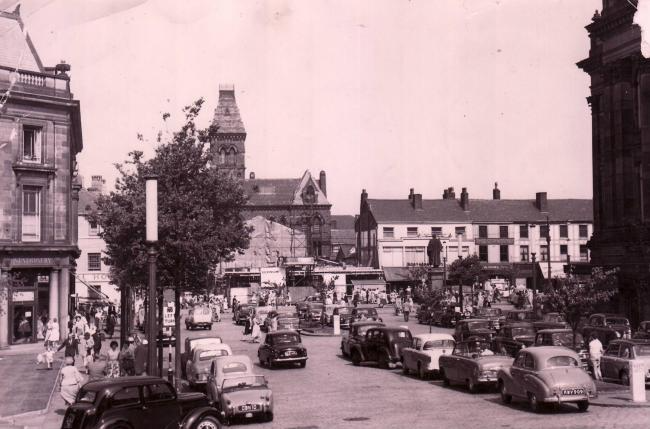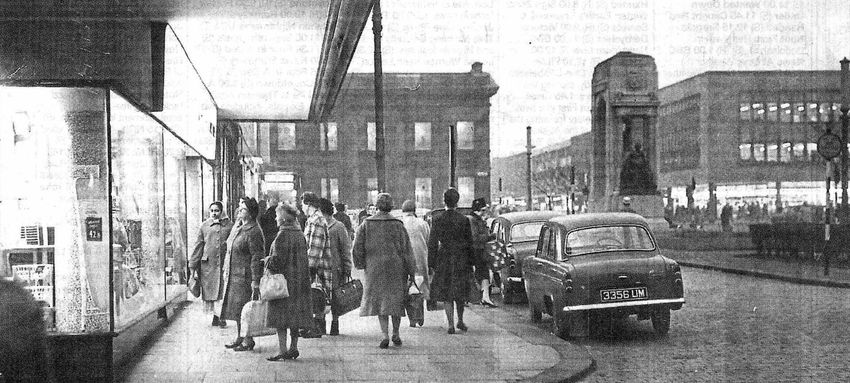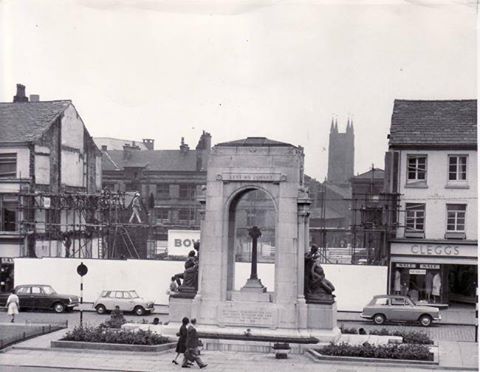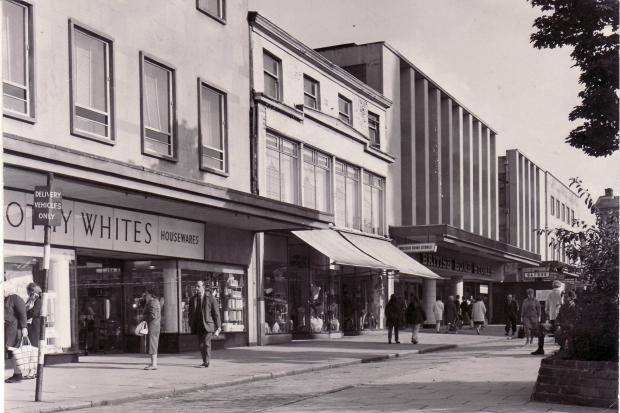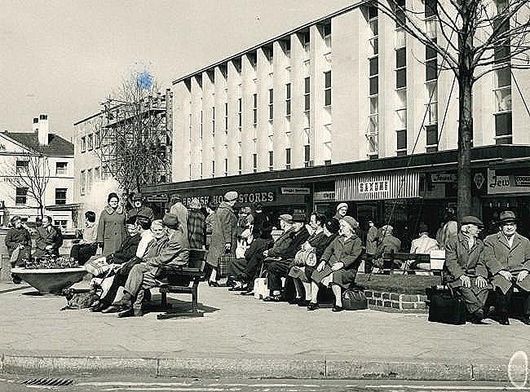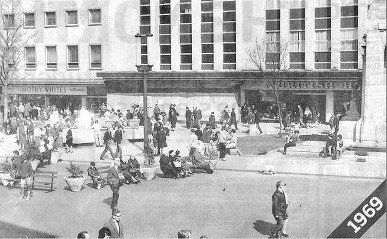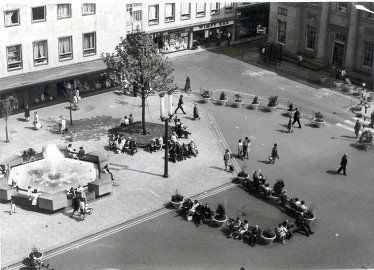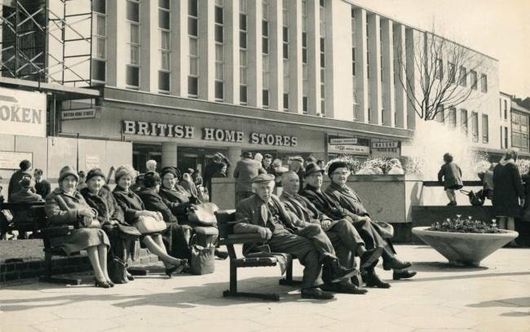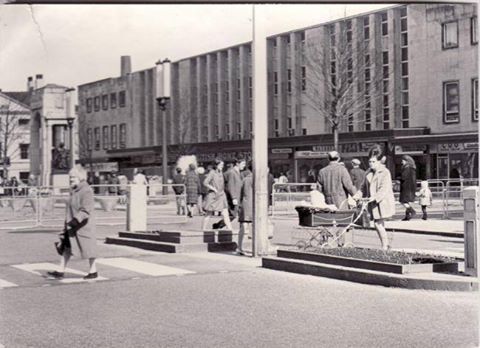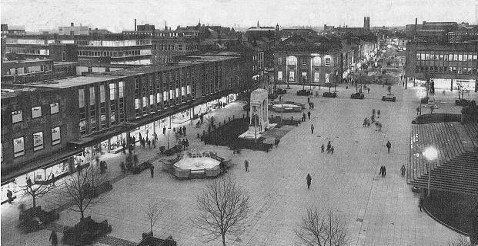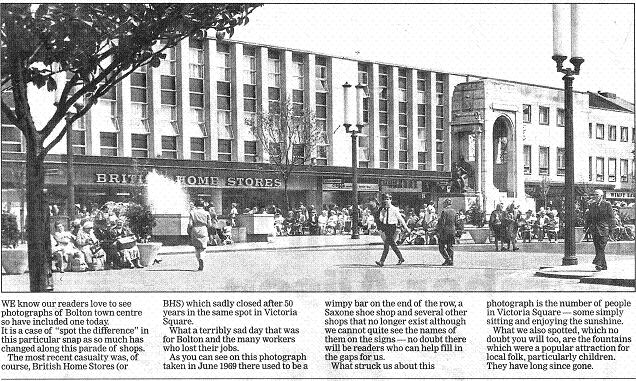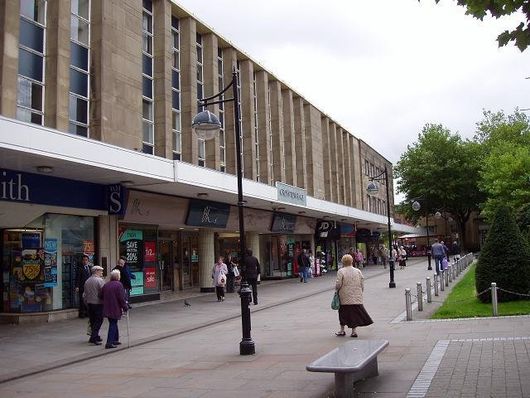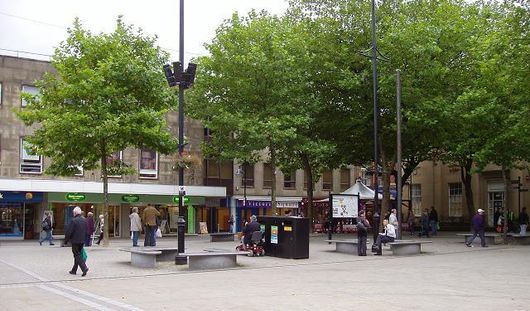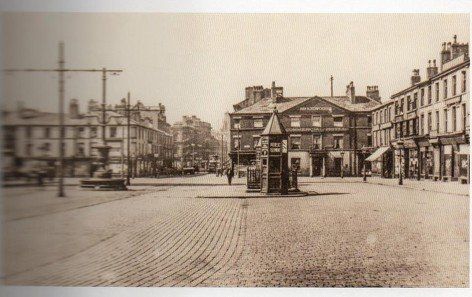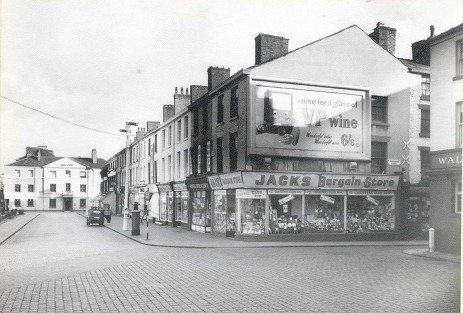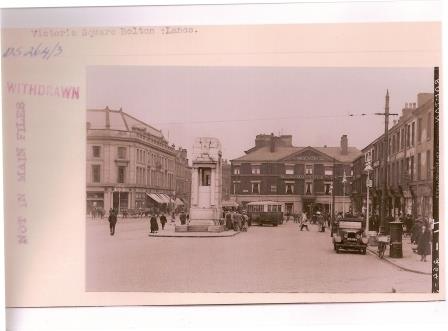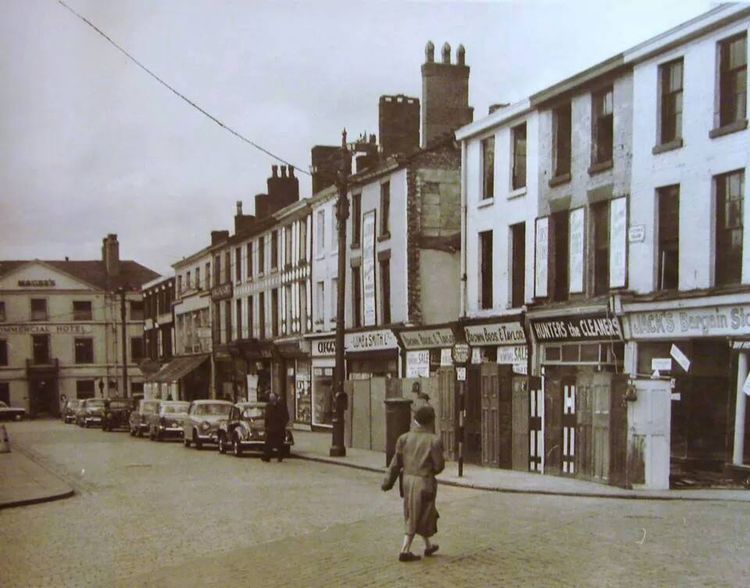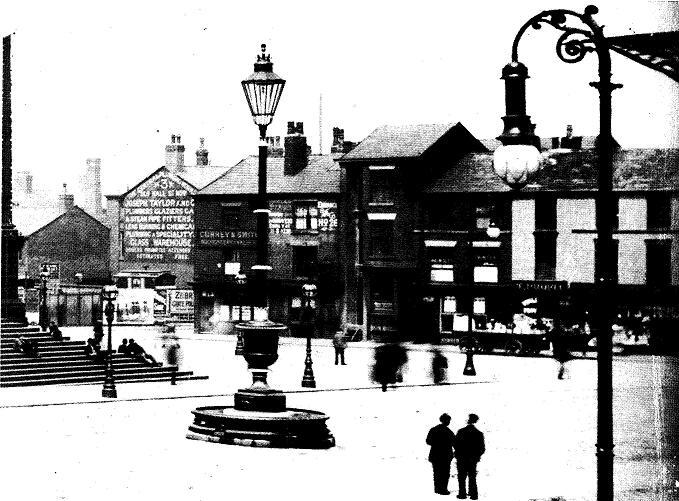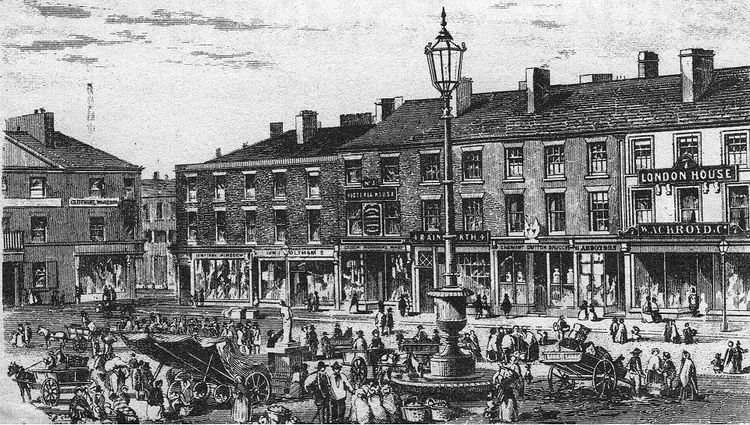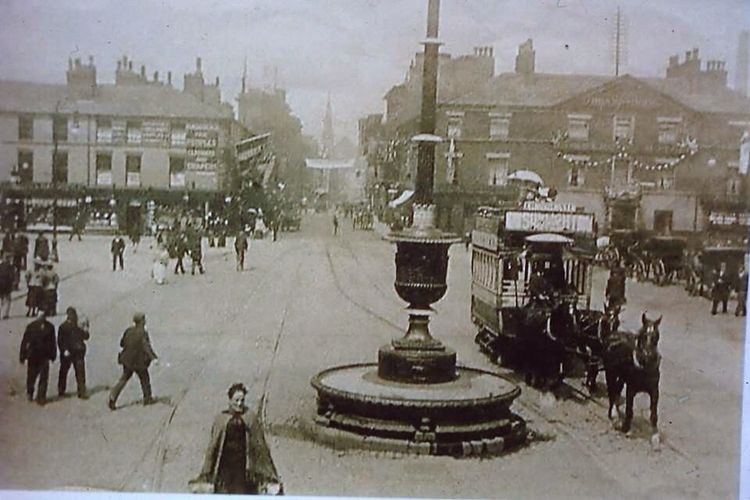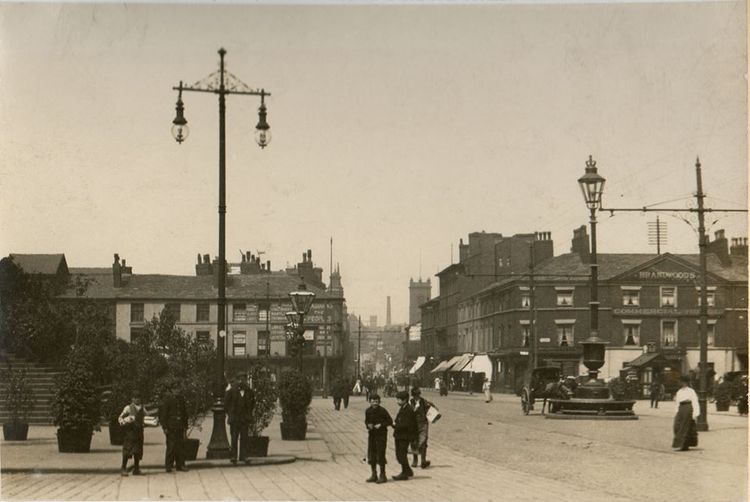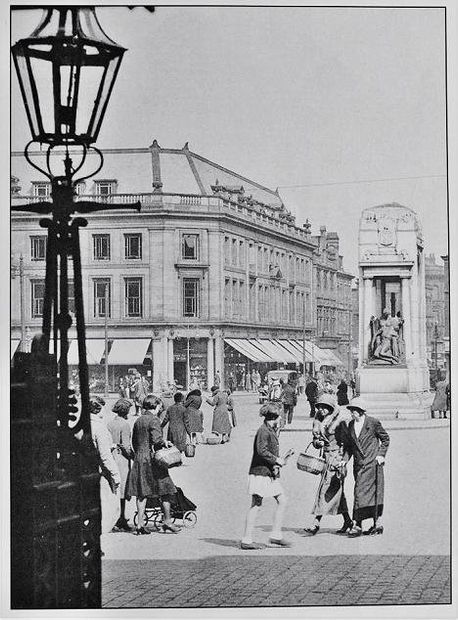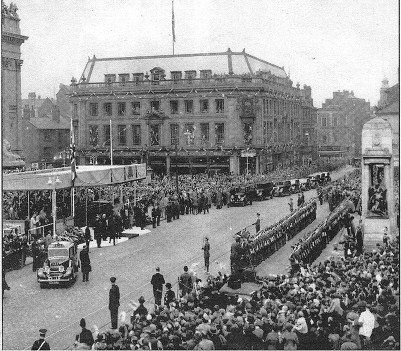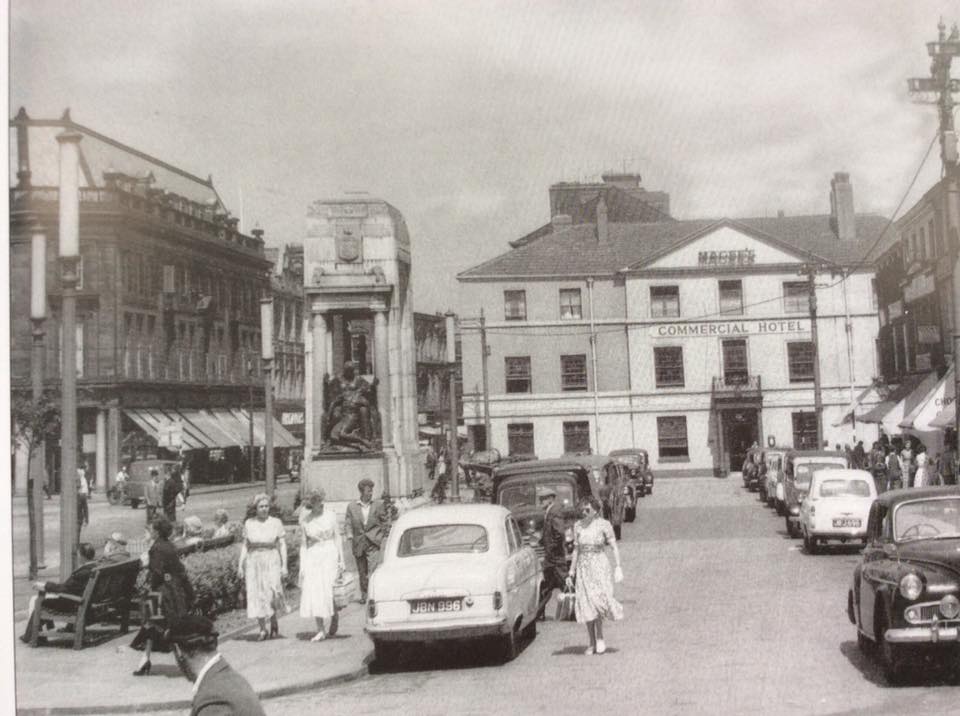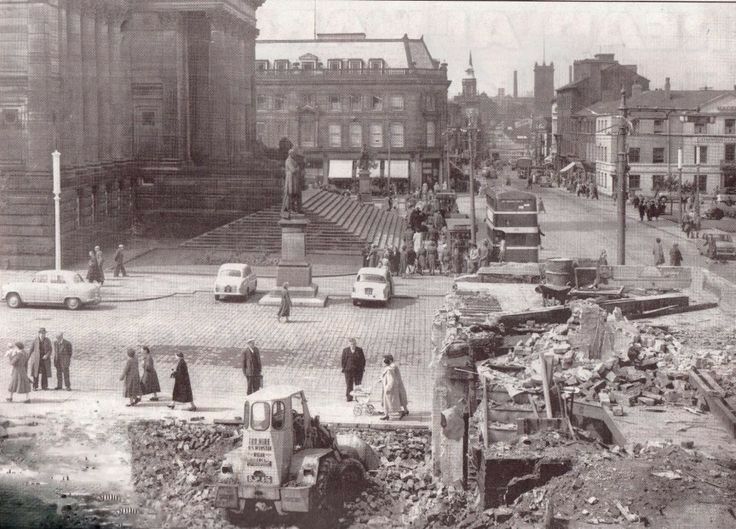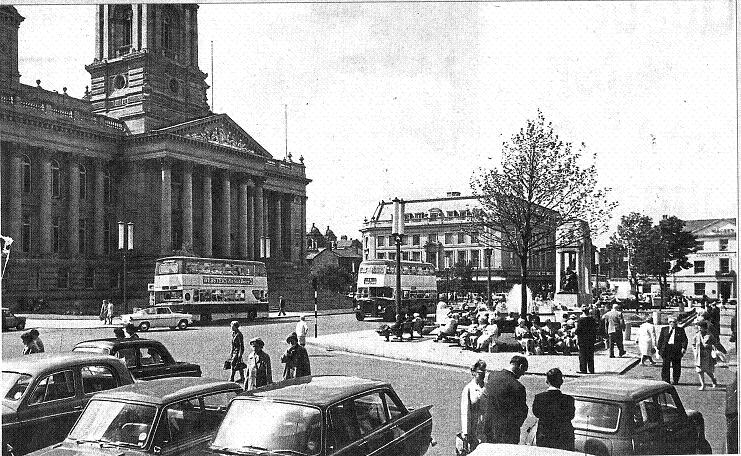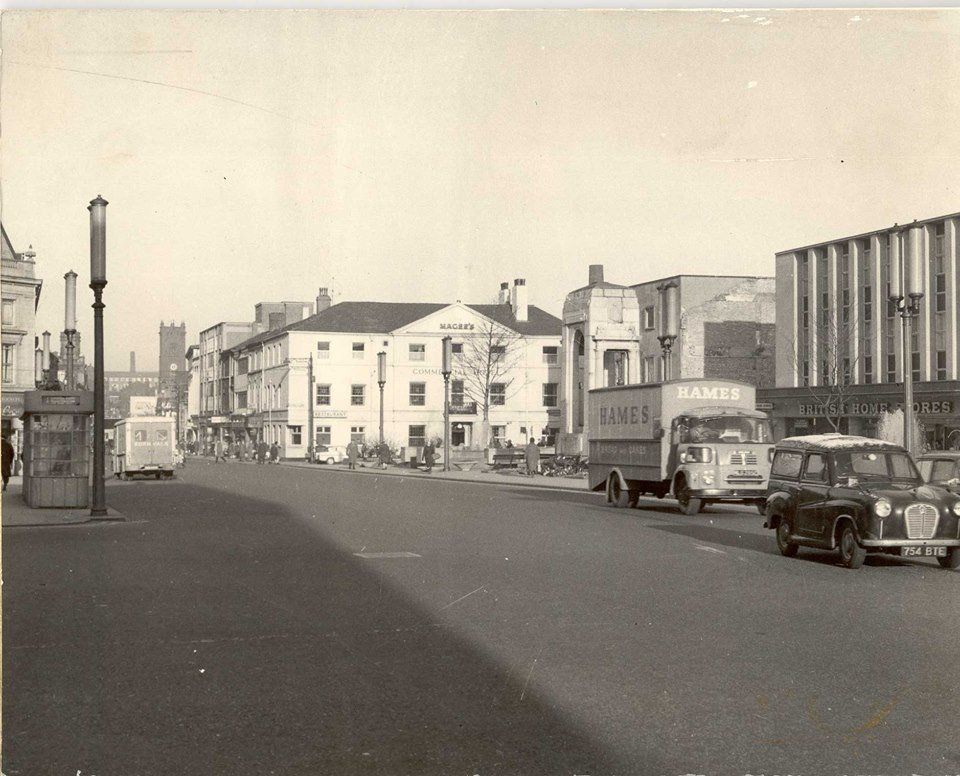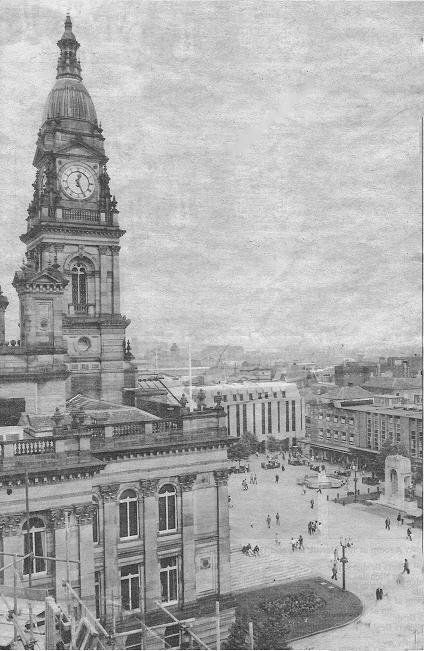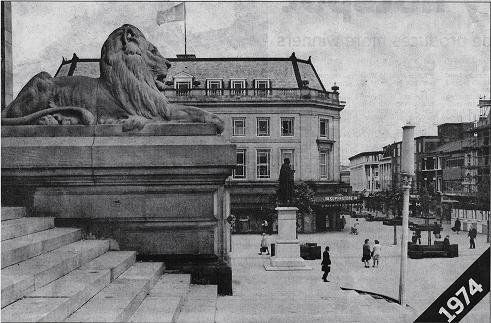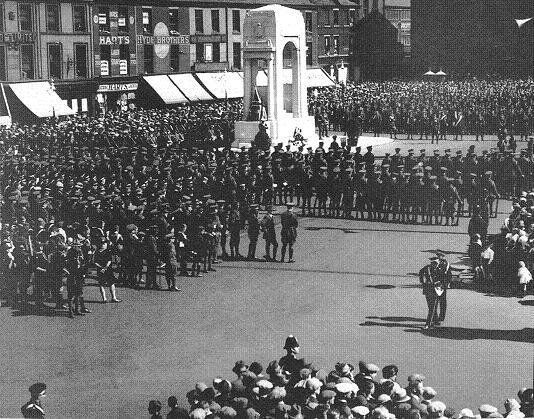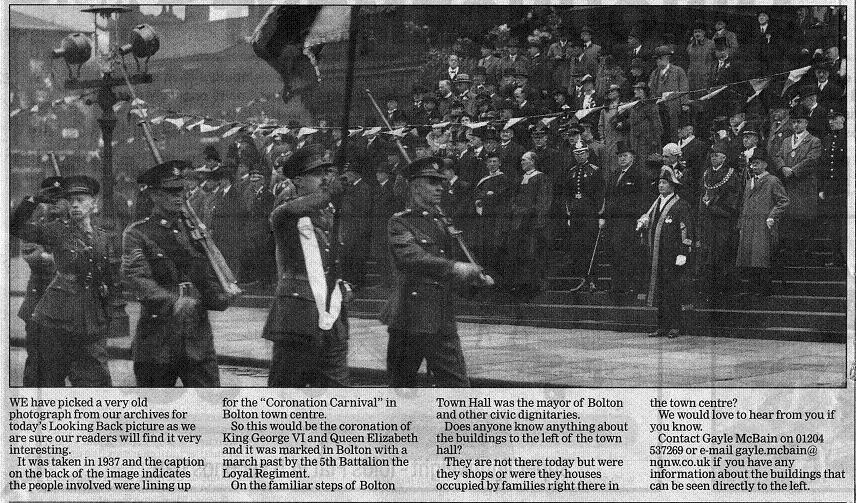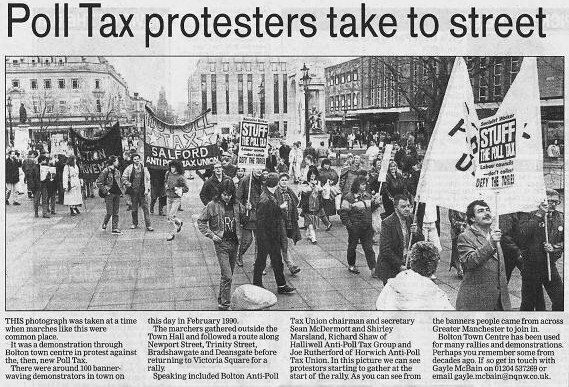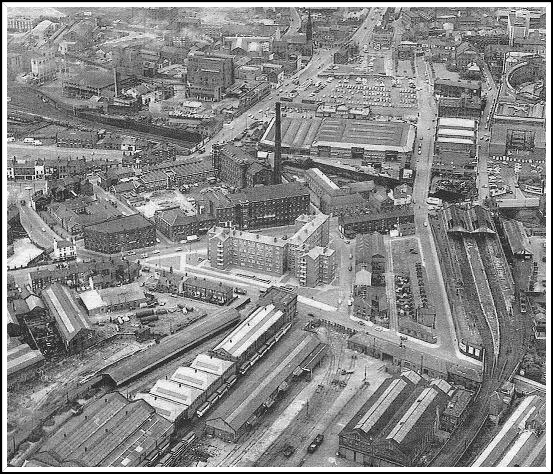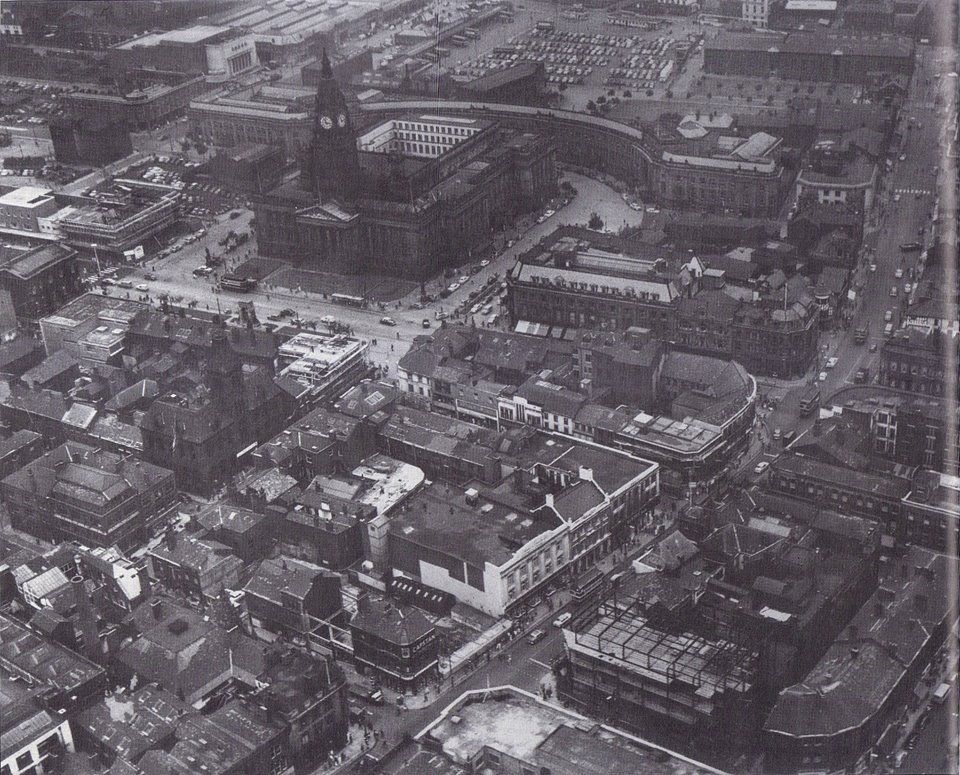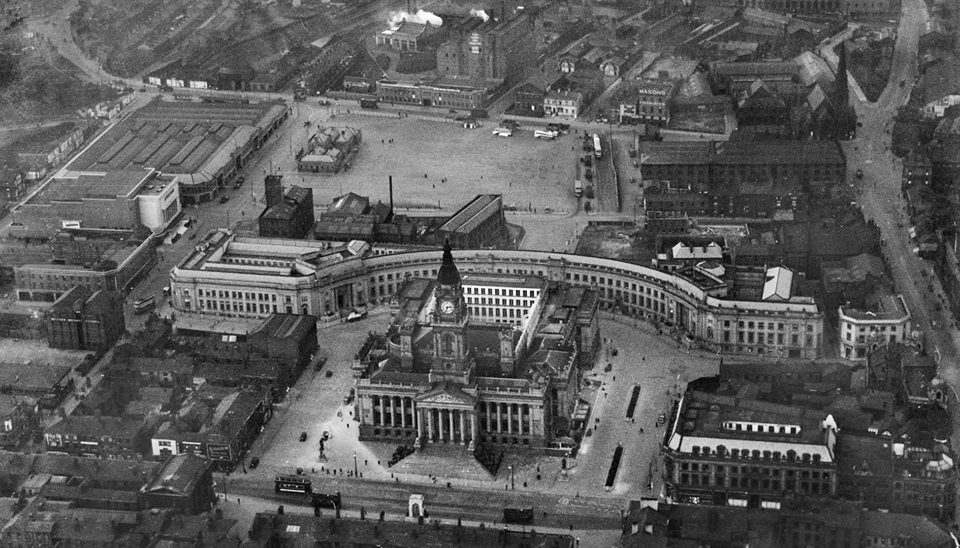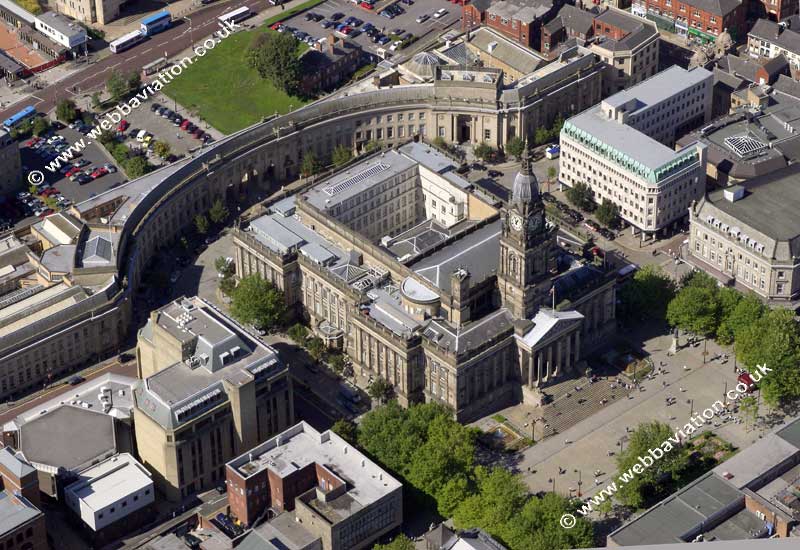The first part of our picture tour is down this page below the full menu.
A comprehensive list of dates relating to the history of Bolton is displayed on page 2.
Welcome to a gallery of almost 2000 pictures of Bolton dating from around 1880 to 2020 with the majority from the 1930s to 1960s of places which will be fondly remembered by many viewers.
We start around the Town Hall and Victoria Square then as we move down the page and move from page to page we are taken on a walking tour of the town centre via Exchange Street, Acresfield, Hotel Street and Le Mans Crescent with diversions into other nearby Streets. We continue to Ashburner Street and Newport Street, past Trinity Church and the station then after an excursion to Burnden onto Bradshawgate, Nelson Square and Silverwell Street. Churchgate, Deansgate, Knowsley Street and Moor Lane
We complete the town centre tour by travelling up Great Moor Street but then continue up Derby Street, Daubhill and St Helens Road. A further route takes us up Deane Road and Wigan Road.
Later pages take us on a stroll along the River Croal from its source at Red Moss, through the town centre, to the River Irwell. We explore Bolton's Elephants, we describe the life and work of Samuel Crompton and we look at life "up Dobble".
Enjoy.
IMPORTANT NOTE ABOUT SOURCES, OWNERSHIP AND COPYRIGHT
No specific permission has been obtained for the use of many pictures on this site which do not belong to the site-manager personally although all have entered the public domain in one way or another and some are noted as "with permission".
A large number of pictures derive from clippings made over many years. For any picture which appears to be newsprint, all rights remain with the Bolton News though I believe that they have donated a large part of their archives to the Bolton Museum archives.
Other pictures are noted as belonging to some person's private collection. Others are captioned with the name of the person who (so far as I know) first posted them to Facebook. I especially mention David Whenlock who has posted many pictures on Facebook from his very large collection of postcards and who gave me permission to use some. Many of these pictures will be out of copyright because of their age but we recognise his efforts, expense and expertise.
If you copy and reuse any item from this web-site you do so at your own risk - citing this web-site as the source will give you no protection whatsoever against any action by a copyright owner. As a small measure of protection and as common courtesy you should copy the ascription along with any picture.
The number of pages is very large and cannot be managed on a simple menu. All pages can be accessed though the links below.
Click on an orange button.
THE RIVER CROAL
ELEPHANTS
DAUBHILL
SAM'L CROMPTON
We start with an over view of the town centre which we shall be looking at from ground level shortly.
1954 - The Town Hall was built in two parts, the front third including the clock was opened 5th June 1873 by the Prince and Princess of Wales, later Edward VII and Queen Alexandra; then extended along with the Crescent, work starting 1932, opened by Earl of Derby in 1939 (not the one who had his head chopped off), though it was first in use in 1937.
The building of the Town Hall was first planned in 1863 to provide work during the cotton famine caused by the American Civil War. Building started in 1866.
The appearance was copied from Leeds Town Hall then in turn copied by Portsmouth.
Note the dark building behind the Crescent on Cheadle Square, brick (but partly tarred?); it contained the ambulance station.
The Hippodrome (repertory theatre) is visible on Deansgate.
The Odeon, closed as a cinema, Mecca Bingo, finally demolished 2008.
Ashburner Street market, dates from about 1932.
Bus Station – the market offices and one row of buses – the rest of this was a car park on which the twice yearly fair was held.
Old industrial units part of which was Mason’s fireplace workshop were originally part of the Bessemer furnace site where the original Leigh Bolton railway terminated.
The White Lion and the adjoining row of houses are still there but the White Lion ceased to be a pub quite a few years ago.
A stone built building – once the library – now replaced by Wellsprings, was Barclays Bank, became Bolton News office in 2012.
Another black, brick building which was a very obvious landmark was the Magee’s bonded warehouse. This area was Howell Croft, or since the Town Hall split it in two, Howell Croft South which also gave its name to the Daubhill and Deane bus terminus.
1962 - Howell Croft again. New shops have been built on Newport Street and Great Moor Street but the Wheatsheaf Hotel is still the original building. It remained out of line for quite a while after the shops were built but was demolished and rebuilt in line later in the year of this picture.
Note that the chemist, Timothy Whites and Taylors (later Boots, now independent) and Shannon’s were built to match the rounded front of the Wheatsheaf. The third corner should also have been made to match, but is still square even after the quite recent rebuilding for the Olympus chippy.
Two buildings which remained for another year or two but are now long gone are the Commercial Hotel and the Great Moor Street Congregational Church.
Click on any image for a full size picture. Navigate using <>. Press X to exit.
1 This picture was taken from the Town Hall roof looking over the Crescent to Moor Lane Bus Station in 1969. We have had the first rebuild of the bus station. The Dog and Partridge is still on Moor Lane. The old buildings between Ashburner Street and Barn Street remain as does the Odeon Cinema (Bingo from January 1983, demolished 2007). The Gas Works is there and the tower block at BIHE has been built.
2 This picture was taken from the same viewpoint as but a couple of seconds earlier or later than the one to the left.
Old ambulance station is still standing; Mason’s warehouse has gone but the shop remains. You can also see the Albion.
The Gas Works dominates the scene. Paderborn Court and Jubilee House were built on the gasworks site in 1978.
3 1947 This picture taken from somewhere up the Town Hall clock tower. This is Bolton’s own Coronation Street (it is still there between the back of the Newport Street shops and the octagon Car Park.) This was the Wholesale Market which moved to Ashburner Street when the new market was opened in 1932. Howell Croft South bus station – note there are no shelters - has only recently been opened. Trolley buses for Daubhill and Leigh. petrol buses for Deane and Westhughton turn right onto Great Moor Street, then past GMS station which was Bolton’s first railway station.
There had been a tram terminus at Howell Croft South when the site was used for the wholesale market. SLT discontinued trams on 16 Dec 1933 the last route being Leigh to Four Lane Ends with trolleybuses running the route (through to Bolton?) the next day. The first trolleybus abandonment took place on 25th March 1956, when the service between Bolton and Four Lane Ends ceased to operate, to be replaced by motorbuses the following day.
Bowes – men’s outfitters on Newport Street – always had a tailor’s dummy outside the shop door – people still occasionally say when they’ve been left standing around, I felt like the man outside Bowes.
Along Newport Street to Trinity Church. Hick Hargreaves, lots of industrial buildings, and chimneys!!
4 New shops on Newport Street and Great Moor Street and new Wheatsheaf. The railway station has not yet been moved, the Railway Hotel still stands on the corner of Newport Street and Trinity Street. Dawes Street and Soho Street area has been cleared though the Catholic Boys’ Club remains standing until September 1974. Hick Hargreaves not yet gone. Coronation Street has been rerouted round the end of the shops and also moved a little to the right to align it with Old Hall Street. Newport Street is pedestrianised (from 1969). Picture posted on Facebook by Peter Lodge.
Now we will go down to ground level but there are more interesting shots from the air at the foot of the page.
© Francis Frith Co Ltd
Picture of the Town Hall before extension.
See the old Howell Croft buildings behind and the buildings on the right later replaced by the Oxford Street Co-op.
The chimneys at the left are on the Blackhorse Street / Moor Lane site of the Bessemer Forge and the Iron and steel company.
Note the lamp-post which will be described later.
Above: The Town Hall decorated for the Diamond Jubilee of
Queen Victoria:
Top right: Town Hall decorated for the Coronation of
Edward VII in 1902
Right: The Town Hall decorated for the Coronation of
George V in 1911
Below:1937 with the Town Hall rather smoke-blackened; behind and to its left is the end of the Civic Centre Crescent which has just finished being built. To the left is the block of shops familiar to many, demolished in the 1950s, and the gable of the Town Hall Hotel.
c1910 Notice the open top tram. Manchester Furnishings was on this south side of Victoria Square until the block was demolished c1953. The classical style building is the Exchange Building built in 1825 as a location where business transactions took place. An private reading room was established in 1853, then a public subscription library, then it was the public Reference Library while Victoria House became the lending library before both were moved into the Crescent in 1938. The board on the edge of the roof reads Public Library.
The Bolton Centenary Handbook, 1838-1938 indicates a slightly different history. Quote: On the 12th October 1853 the public library and museum was opened in the upper rooms of the Exchange Building.Quote: In 1868 premises in Oxford Street vacated by the Mechanics Institute were taken over by the Libraries and Museum Committee for use as Central Lending Library.
The 1853 date for the use of the building as the public library is indicated in this clipping from the Bolton Evening News.
Below - caption - This new photograph of the Bolton Reference Library, Victoria Square is interesting as showing its strong architectural dignity. Its erection as the Bolton Exchange is dealt with in an article in this issue.
The Caduceus is featured on the building and has puzzled many people who have wondered if the building had been an infirmary. This symbol is the herald's wand of the messenger god Mercury or Hermes. Mercury is also the patron of merchants (also shepherds, gamblers, liars and thieves) which seems to be the reason it is there. The building has NEVER been associated with medicine. The rod of Asclepius strictly has only one snake.
------------------------------------------------------->
Victoria Square used as a bus station in November 1930. Buses to Belmont, Harwood, Walshaw and Rochdale.
Notice the cenotaph which was inaugurated in 1928 still does not have its statues which were installed in1931.
Town Hall Square is of course properly called Victoria Square so named in 1897 for the Diamond Jubilee .
c1950 A familiar view, this is still a through road. Notice the cenotaph, the old Reference library, Singers on the corner and the view along Newport Street.
The Exchange Building has recently been a Building Society and Coral's Bookmakers
1953, Victoria Square decorated for the Coronation of Queen Elizabeth II. Some demolition has taken place giving a view through to Lever Chambers.
1960 The left hand side of Newport Street remains as many of us remember it with Freeman Hardy and Willis, Bata, Truform, John Read, Timpsons. Those buildings remain intact in 2021 though most of the shop fronts have changed and the whole row has been painted in pastel shades. The road has however been widened and the whole right had side is being rebuilt.
April 1963. Work on the flower beds. The rebuilding of Newport Street is now complete
1955 Relaying the setts in Victoria Square. Notice the Triumph Mayflower and the Jaguar.
1969 Victoria Square and Newport Street are still through roads and bus routes. All the new shops can be seen on Newport Street and we see the fountains at left which were very popular and felt to be a great loss when they were removed.
1968 Newport Street has been widened and new shops built on the right. Lots of traffic, a good view of the Exchange Building, old Reference , remember these bus shelters? Two Ford Anglias!
1969 Victoria Square and Newport Street are still through roads and bus routes. All the new shops can be seen on Newport Street and we see the fountains at left which were very popular and felt to be a great loss when they were removed.
Old Postcard of Victoria Square with the Grapes Hotel, the Exchange Building, and the Newport Street corner with ...leys bedsteads and furniture. This corner became GAME after rebuilding c1960
A similar view. Note the sign on the Exchange Building which says Public Library.What is the cage like structure on the building to the left? Picture from Angela Thompson's collection
dated as1966 but demolition of the old Newport Street buildings appears to be in progress on the right which would make the date around 1960. Note the Bedford van being driven with its door open. This was also sold as the Dormobile.
The Bolton Evening News 24/10/09 reports:- "In December 1949 workmen removed the roof of the old reference library, the height of the roof was reduced by about seven feet and a new steel roof was erected." But comparisons of pictures of earlier and later dates show no evidence of this! "The building was then refitted inside to house the Inland Revenue offices". This building was originally The Exchange (trading exchange, not telephone exchange) which gives its name to Exchange Street running to the left and under the Grapes bridge. Exchange Street once continued on the other side of Newport Street which at that time was named Cheapside between Exchange Street and Ashburner Street.
Before we explore the rest of Victoria Square we look to the right between the Grapes Hotel and the old Library Building into Back Cheapside. This runs all the way along the back of Newport Street to Bold St. There has never been a (front) Cheapside in living memory but Newport Street between Exchange St and Ashburner Street was formerly Cheapside.
Some people remember Bell's "sports outfitters"; some go into raptures over memories of the scents of tea and coffee when patronising Greenwood's.
Picture posted on Facebook by Henry Lisowski.
Many people remember Back Cheapside for the bus staff social club. Here we have licensee Elaine Sherrington with artist Frank Overton in November 1978.
1939 Le Mans Crescent Civic Centre in Bolton was opened in 1939, just two months before the start of the Second World War. The civic ensemble, comprised of library, museum and art gallery, magistrates court and central police station was designed by Bradshaw, Hope and Gass, architects, of Bolton, for Bolton Borough Council. Inscribed plaques at the bases record the start of works in 1932 and the opening took place seven years later, in June 1939, by Lord Derby. Although the central police station is no longer there (2013), much of the interior retains its original plan form, with museum, library and court interiors well-preserved. Circulation spaces, lobbies and spiral (??) stairs are handsomely detailed in high quality materials. Our picture shows Lord Derby and Mayor of Bolton, James Entwistle, at the civic opening ceremony. The Mayor of Bolton's speech said that he knew there had been much opposition to
The Grapes Hotel and the bridge to Exchange Street. The building behind the Hotel is probably the Provincial Building which still stands
You can hardly miss the huge telephone wire array probably attached to its far wall. c1902. Both pictures posted on Facebook by Edward Thompson.
Apparently this is a char-a-banc trip to Blackpool c 1920.
Of different interest see two phone boxes, in the same style but operated by two different companies, LH box was operated by NTC and the RH one was operated in competition by the Post Office. They are among the earliest confirmed phone boxes in Britain. It seems Bolton was at the forefront of telephone technology, with the link between the Gas office above, and the gas works being one of the first phone lines anywhere, though I can't find the original article now to confirm the date. Apparently the phone line from the Gas Works to Gas office was installed on 17th Jan 1878, only 18 months after Bells first phone conversation, and at the same time that Bell demonstrated the telephone to Queen Victoria (notes from Peter Lodge).
We also have a clearer than usual view of the gas offices tower, perhaps because it has not got dirty yet.
Shops
-- No3 Ross Munro licensed premises;
--no5&7 The Victoria House for Mourning and Mantle House /Taylors outfitters;
--no9 Millar tailor;
--no 11&13 London House, Lythgoes sweets;
--no15 Alston's;
--no17 Harts curtains and linens;
--No19&21 Hyde Bros; milliners
--no23 Perseverance House – T Hindle;
--no25 British & American Meat Co.
-----------------------------------------
Detail: note the lamppost and trough.
A charming scene of a date fairly close to the picture above. The crowd have clearly gathered for the visit of some personage.
1928 the unveiling of the cenotaph
July 1928 shortly after the unveiling of the cenotaph.
At this time the road between the cenotaph and the shops was used as the central bus station.
Picture from Edward Thompson's collection
1880 Sunday School Celebrations. They even climbed on the roof to get a good view!
The cenotaph on Victoria Square at some date between its unveiling in 1928 and the installation of the statues in 1931
1953
Decorated for the coronation of Queen Elizabeth II
Do you remember these shops on the Town Hall Square?
Spratts builds up a dog, Perseverence House,
simple gardens and grass areas round the Cenotaph.
Black cars.
Over the roofs, Parish Church far left, St Andrew’s Church towards the right.
The panelling around the central seven windows seems to have appeared after 1953.
Above: Shops probably 1950s
Right: Somewhat earlier: London House Lythgoe’s sweets
Advertised as “Opposite Town Hall, Front Ent." and selling "the best variety outside London of high-class boiled sweets, satines, marzipans, bon-bons, chocolates, fancy boxes of novelties at prices to suit all buyers.
Importer of Continental Novelties and High-Class Chocolates, etc."
They also made "Lythgoe's Best Toffee, a really wholesome sweetmeat, suitable for all ages, and may be obtained from most Grocers and Confectioners in Bolton and District. Should any difficulty be occasioned to obtain it, a post card enquiry will immediately be replied to giving nearest agent." They obtained the only award for purity and quality from the Sanitary Institute of Great Britain at the Health Exhibition of 1887
The business had been established in 1879 (and the telephone number was 241x). It is listed in the 1932 Bolton Directory, but by the time of the 1967 Directory it has disappeared.
Victoria Square. At the north end of the block of shops on the Hotel Street corner we have Naisby's and Northern House. Naisby's has now extended into Ross Monro's who have relocated round the corner in Hotel Street. Picture above posted on Facebook - I belong to Bolton by Gene Watts.
Top right: Naisby's also known as Material World stood on this corner for many years. According to an advertisement it had been established in the 18th Century and was described as "Merchant Drapers, Manufacturers, linoleum fitters, Carpet Planners, Wholesale Shirt Skirt Jacket and Window Blind Makers. A reliable firm with experts in every Department."
Bottom right 1958 Naisby's Hotel Street windows.
c1957 some demolition seems to have started on the corner of Newport Street that became GAME. This picture taken from upstairs in the Co-op Department Store.
Victoria Square full of shoppers c1960.
c1961 Timothy White's and Taylor's occupy the new shop built on the corner of Hotel Street. This building was completed before any work started in the centre of the block. Some demolition occurred at the right hand end earlier.
It seems that the then owners of Naisby's had planned a new building before the Council's plans for the block but then did not take up occupation. (reference lost, please let me know if you have information)
undated Bolton News picture showing Naisby's demolished prior to building the Timothy White's and Taylor's store.
January 1964 The new shops on Newport Street have been complete for some time. Opposite the Town Hall Naisby's has been replaced by Timothy White's (and Taylors seems to have been dropped) and the rest of the block will shortly be rebuilt.
1964 Bolton News picture. The demolition and replacement of this block of shops was done in a piecemeal manner. This has more or less temporarily reopened Fold Street and gives an indication of what Lord Leverhulme had planned with a grand avenue from the Town Hall to the Parish Church.
Presumably the same date as the above picture with Clegg's still operating next to the recent demolition.
1967 The whole block has now been replaced with the exception of Northern House whose occupants are still trading.
Picture posted on Facebook by David Whenlock.
1969 The rebuilding of Northern House is complete but new tenants have not yet moved in.
Victoria Square has just been closed to through traffic and pedestrianised.
April 1969 shortly after pedestrianisation.
Below 1969. See the caption
1968 Northern House has now been demolished.
The barriers indicate that Victoria Square has been closed to traffic. Are pedestrians using the zebra crossing by habit or because traffic is still using Newport Street?
Picture posted on Facebook by Denis McCann.
The town got an award from the concrete association for the reflagging of Victoria Square.
The fountains were a gift from a local benefactor Samuel Wigglesworth (a Westhoughton pharmacist)
Trinity St station clock is visible on the sky-line
When this picture was originally published, it was reported that a Christmas shopping war was raging, Manchester having distributed 200,000 leaflets to surrounding towns including Bolton advertising Christmas shopping and offering “free park and ride”. In its turn Bolton distributed 200,000 copies of a newspaper in Bolton, Wigan, Bury, Blackburn and Darwen, which further annoyed their town councils.
pre 1920
Victoria Square, no cenotaph, pointy phone boxes as described above, fancy lamppost with a trough around it. The tram-lines had to be laid to veer round this. It was eventually removed so as not to compete for attention with the cenotaph.
The Commercial Hotel is prominent. The buildings opposite it were later replaced by the Oxford Street Co-op.
Late 1950s or early 60s We look from Jack's Bargain Store on the corner of Exchange Street along the front of the shops to the Commercial Hotel
c1930 after the opening of the Co-op Department Store and the inauguration of the cenotaph but before the statues were installed.
The first bit of demolition of the Victoria Square shops. Naisby's at the far end is still standing.
The north side of Victoria Square in 1897.
The ornate gas lamp and the circular trough surrounding its base were removed in 1925 because their presence would have detracted from the effectiveness of the War Memorial’s setting and they were considered a menace to traffic.
These buildings were replaced by the Oxford Street Co-operative Department Store.
------------------------------------------------------
A splendid pen and ink drawing.
The shops are numbered 1,2,3... so this is the Town Hall Square before it became Victoria Square indicating a date of before 1897 though number 3 is already called Victoria House.
The market was held in Victoria Square giving rise to Market street (which preceded the Market Hall by some years).
Number 7 has the grand title London House which was retained even after Ackroyd’s left.
A prominent feature is the lamp-post and trough.
Mr Benjamin Hick was an eminent Bolton engineer whose son entered a partnership which became "Hick Hargreaves". Benjamin Hick designed a "gas pillar" (a cast iron pole with a gas light at the top) and presented it in 1826 for the opening of Bolton's New Market Place, claimed to be the finest uncovered market in the country. In 1859 his son John gifted a circular "cattle fountain" round the base. Both gas light and trough remained a feature of the Square until 1925. The pillar had been described as "a piece of elegant and classical workmanship" and "justly the admiration of people of taste."
The tram lines had to wind carefully round the "gas pillar" and trough. They were removed in 1925 because their presence "would have detracted from the appearance of the War Memorial's setting and were considered a menace to traffic."
c1899 before electrification of trams and before building of the Victoria Hall.
Picture posted on Facebook by Edward Thompson.
Great picture of that end of Victoria Square. The trams are now run on electricity and the tower of the Victoria Hall is visible.
Picture posted on Facebook by Edward Thompson.
Posing with the new double-decker omnibus .The Oxford Street Co-op Department store is now open (1927/8) and the cenotaph remains without its statues which dates the picture to between 1928 and 1931. In those days and through to the 1970s many shops had canvas awnings. Until 1932 the area near the shops was the main bus station.
The correct name for this Square was by then, of course, Victoria Square, but Town Hall Square never quite went out of use.
One of David Whenlock's postcards.
1957 posted on Facebook by Iris Hennessy click on a picture; navigate <>; exit X
demolition on what became the GAME corner
early 1960s
c 1967 from collection of Angela Thompson
1986 Commercial Hotel now replaced by Mothercare
1974 Mothercare under construction
May 1901 The return of volunteers from the South African wars.
1928 Remembrance Sunday in the year the cenotaph was unveiled.
1937 "Coronation Carnival" (King George VI and Queen Elizabeth). Civic dignitaries watch a march past by the 5th Battalion, the Loyal Regiment.
Feb 1990 Poll Tax Protest
1 1964 The most prominent feature of this picture is perhaps the Hargreaves House flats. These remain standing and occupied but little else to the left and above remains. Beyond the flats is Flash Street Mill whose chimney dominates many pictures of this era. Beyond there and across the railway we see the gas works then St Paul's Deansgate which still stands but no longer used as a church. Behind the chimney is the market and we also make out the Market Offices behind which is Moor Lane bus station not year provided with the platforms and shelters of later years. That area is the town's main car park used twice a year for the fairground. Nearer than the flats is Crook Street which ran under a railway bridge opposite Blackhorse Street Sainsbury's and the Trinity Retail now occupying the area at the very bottom of the picture. We see a number or railway sidings at the old Crook Street goods yard and over the bridge the lines go into Great Moor Street Station. On the right the Civic Centre Crescent just sneaks onto the picture with Cheadle Square behind it and the Hippodrome Theatre.
2 1928/29/30 The Town Hall has not yet been extended and stands out literally black as coal against the newly built not yet smoked stained Co-operative Department Store opened in 1927. Some demolition has already taken place for the Town Hall extension and the Crescent but you can trace the original line of Howell Croft (not yet divided into North and South) with the Aspin Hall at its junction with Deansgate. Old Hall Street, visible behind the Co-op then again below the TH is already North and South having been divided when the TH was first built. To the front of the Town Hall we appear to have the base on which the Cenotaph would be constructed which suggests the correct date for the picture is 1928. Down to the left bottom corner we have Newport Street, the far side still standing, the near side demolished on widening.
3 c1961 The Town Hall is still waiting for a clean. Above it you can see the Odeon Cinema and the car park which has not yet become the extension of Moor Lane Bus Station. To the left of the TH is new building after the widening of Newport Street. In font of the TH some demolition has taken place of the row of shops opposite the TH in preparation for the Arndale Centre and on the corner of Hotel Street the new Timothy Whites and Taylors is being built. At the bottom of the picture we have the edge of the new Woolworth building's roof and on the other corner of Bridge Street the big new Boots is under construction. Across the road, marks and Spencer's still occupy their old building and Dunn's is still trading but all around demolition is taking place for the present, huge M&S store. Picture posted on Facebook by Peter Lodge.
4 May 1938 The Town Hall has just been extended and the gleaming, new Crescent takes up the rear. Beyond this it should be easy to pick out the Odeon, the Ashburner Street Market and the Market Offices , the empty space which had been the centre of Bolton's steel and brass industries with the old warehouses to the right. Across Moor Lane is the gas works, Elim Church, The Albion, Mason's fireplaces and St Paul's Church and schools.

